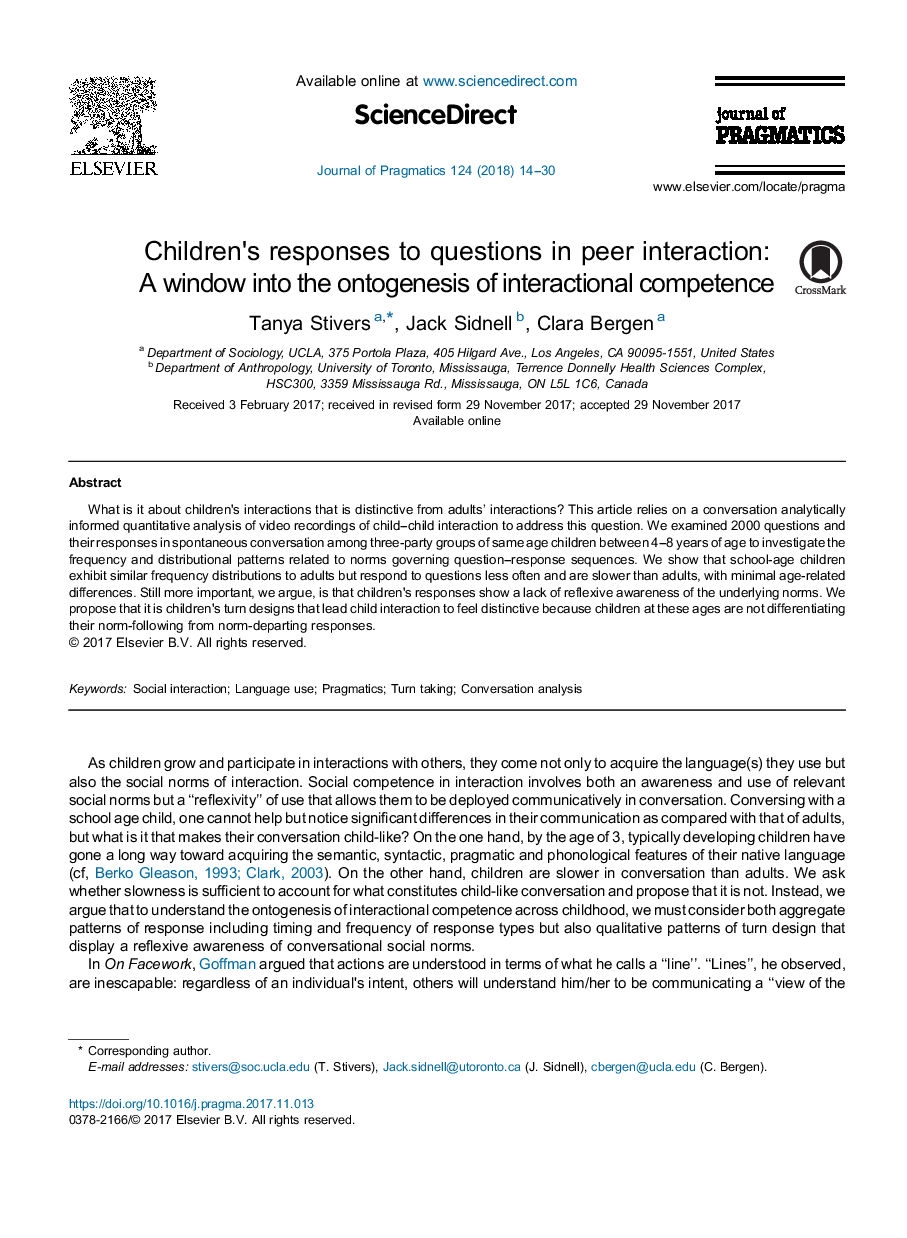| کد مقاله | کد نشریه | سال انتشار | مقاله انگلیسی | نسخه تمام متن |
|---|---|---|---|---|
| 7297589 | 1474676 | 2018 | 17 صفحه PDF | دانلود رایگان |
عنوان انگلیسی مقاله ISI
Children's responses to questions in peer interaction: A window into the ontogenesis of interactional competence
ترجمه فارسی عنوان
پاسخ کودکان به سوالات در تعامل همکار: یک پنجره به انتزاع صلاحیت تعاملی
دانلود مقاله + سفارش ترجمه
دانلود مقاله ISI انگلیسی
رایگان برای ایرانیان
کلمات کلیدی
ترجمه چکیده
این در مورد تعاملات کودکان است که متمایز از تعاملات بزرگسالان است؟ این مقاله به تجزیه و تحلیل کمی از تجزیه و تحلیل ضبط ویدیو از تعامل کودک و کودک برای پاسخگویی به این سوال متکی است. ما 2000 سوال و پاسخ آنها را در گفتگوهای خودبهخودی در گروههای سه نفره کودکان سنین 8 تا 8 سال بررسی کردیم تا به بررسی فرکانس و الگوهای توزیع مربوط به هنجارهای حاکم بر توالی پاسخگویی پاسخ دهیم. ما نشان می دهیم که کودکان مدرسه ای دارای توزیع فراوانی مشابه به بزرگسالان هستند، اما به سؤالات کمتر پاسخ می دهند و از بزرگسالان کمتر است و تفاوت های مربوط به سن در آنها کمتر است. استدلال ما هنوز مهم تر است این است که پاسخ های کودکان نشان دهنده عدم آگاهی بازتابی از هنجارهای اساسی است. ما پیشنهاد می کنیم که طرح های نوبت فرزندانی است که تعامل کودک را به عهده گرفتن متمایز می کند، زیرا کودکان در این سنین تمایلات خود را از پاسخ های ناخواسته رد نمی کنند.
موضوعات مرتبط
علوم انسانی و اجتماعی
علوم انسانی و هنر
زبان و زبان شناسی
چکیده انگلیسی
What is it about children's interactions that is distinctive from adults' interactions? This article relies on a conversation analytically informed quantitative analysis of video recordings of child-child interaction to address this question. We examined 2000 questions and their responses in spontaneous conversation among three-party groups of same age children between 4-8 years of age to investigate the frequency and distributional patterns related to norms governing question-response sequences. We show that school-age children exhibit similar frequency distributions to adults but respond to questions less often and are slower than adults, with minimal age-related differences. Still more important, we argue, is that children's responses show a lack of reflexive awareness of the underlying norms. We propose that it is children's turn designs that lead child interaction to feel distinctive because children at these ages are not differentiating their norm-following from norm-departing responses.
ناشر
Database: Elsevier - ScienceDirect (ساینس دایرکت)
Journal: Journal of Pragmatics - Volume 124, January 2018, Pages 14-30
Journal: Journal of Pragmatics - Volume 124, January 2018, Pages 14-30
نویسندگان
Tanya Stivers, Jack Sidnell, Clara Bergen,
